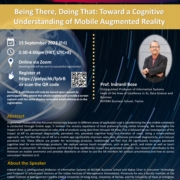Dr. Xiaoge Zhang delivered an online talk on “A Tutorial on Uncertainty Quantification of Neural Network and Its Application for Reliable Detection of Steel Wire Rope Defects” at University of Tennessee, Knoxville (UTK)
This talk provides a holistic lens on emerging uncertainty quantification (UQ) methods for ML models with a particular focus on neural networks and gives a tutorial-style description of several state-of-the-art UQ methods: Gaussian process regression, Bayesian neural network, neural network ensemble, and deterministic UQ methods focusing on spectral-normalized neural Gaussian process (SNGP). Established upon the mathematical formulations, we subsequently examine the soundness of these UQ methods quantitatively and qualitatively (by a toy regression example) to examine their strengths and shortcomings from different dimensions. Based on the findings of the comparison, we exploit the advantages of SNGP in UQ and develop an uncertainty-aware deep neural network to detect the defects of steel wire rope. Computational experiments and comparisons with state-of-the-art models suggest that the principled uncertainty quantified by SNGP not only substantially enhances the prediction performance, but also provides an essential layer of protection for neural network against out-of-distribution data.
Prof. Indranil Bose gave a talk on “Toward a Cognitive Understanding of Mobile Augmented Reality”
Augmented Reality (AR) has become increasingly popular in different areas of application and is transforming the way mobile commerce is conducted through mobile apps. It imbibes the sensory experience of local presence during online browsing. We investigate the impact of AR-based presentation on sales rank of products using data from Amazon AR View. This is followed by our investigation of the impact of AR on perceived diagnosticity, perceived risk, perceived cognitive load, and emotion of users. Using a mixed-method approach, we find that the use of AR on a mobile app significantly improves sales rank, enhances perceived diagnosticity, and reduces perceived risk. These effects are greater for technology products. Additionally, we find that AR significantly increases perceived cognitive load for non-technology products. We capture various touch movements, such as pan, pinch, and rotate as well as touch pressure, in consumers’ AR interactions and find that they significantly impact the generated emotion. Our research contributes to the literature on mobile commerce and provides directions on when to use the AR interface for product presentation and how to assess consumers’ reactions to it.
Welcome five new PhD students to join the group!
The group for risk, reliability, and resilience informatics warmly welcomes the following PhD students to join the team:
Yanwen Jin, Ruonan Zhu, Chenyu Li, Pingping Dong, Jingxiao Liao.




